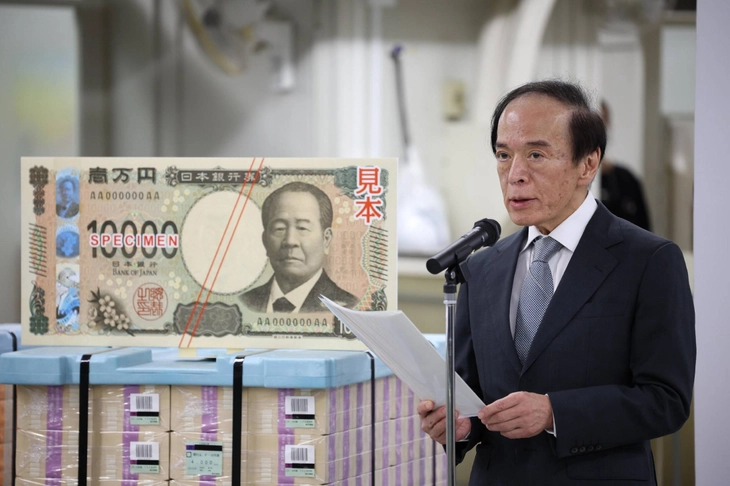
Bank of Japan (BOJ) Governor Kazuo Ueda announced that new banknotes will start circulating on July 3, 2024 - Photo: JIJI
According to the Japan Times , the Bank of Japan (BOJ) will start issuing new banknotes from July 3, 2024 due to the sharp increase in counterfeit money. The new banknotes use 3D technology, applying the most advanced anti-counterfeiting technology in the world today.
However, the new notes have not been very popular, accounting for only 28.8% of the total notes in use. This is only half the figure of the previous currency change in 2004, when the new notes accounted for more than 61% of the total notes in circulation after only 11 months of issuance.
According to the BOJ and experts, there are many reasons why the pace of monetary change is slower than in 2004.
First, the total quantity and value of cash in circulation has increased significantly compared to 20 years ago. The total value of cash in the system increased from 77,000 billion yen (in 2004) to about 117,000 billion yen in 2025, while the number of banknotes increased from 11.3 billion to about 17 billion - an increase of about 50% in both value and quantity.
Second, the trend toward cashless payments is growing rapidly. According to the Japanese Ministry of Economy , Trade and Industry, the proportion of electronic payments in Japan has increased from 16.9% in 2014 to 42.8% in 2024 - surpassing the 40% mark for the first time. This reduces the number of cash transactions, leading to fewer opportunities to collect old bills.
Another significant factor is the phenomenon of people hoarding cash at home - known as "tansu yokin" (keeping money under the mattress). An estimated 49 trillion yen (about $340 billion) is currently kept in people's homes, rather than put into circulation, slowing the process of replacing old money.
In addition, unlike in 2004, when counterfeit money was so rampant that the government had to quickly change its currency, the counterfeiting problem is no longer as urgent as before. According to the Japanese Police Yearbook, the number of counterfeit notes detected has dropped from more than 25,000 in 2004 to just 681 in 2023.
Infrastructure is also a barrier, as although ATMs have fully supported the new notes, many vending machines have not yet updated them. According to the Japan Vending Machine Association, only about 50-60% of vending machines can recognize the new notes, mainly due to the high cost of upgrading. Businesses are waiting for the new notes to become more widely available before investing in equipment changes.
However, the BOJ insisted that the issuance process was proceeding smoothly and that the slow take-up was within initial expectations. "There have been no major problems and issuance is progressing smoothly," a BOJ representative said.
Mr. Takanobu Kiuchi - an expert at Nomura General Research Institute - commented that with the current digitalization trend, this series of banknotes is likely to be the last large-scale issued by BOJ in the past 140 years.
Source: https://tuoitre.vn/tien-giay-moi-cua-nhat-ban-bi-e-20250707135151338.htm










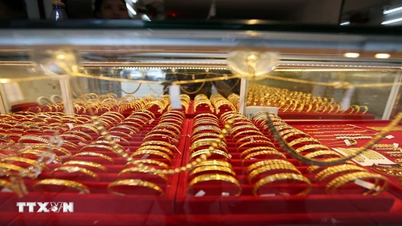







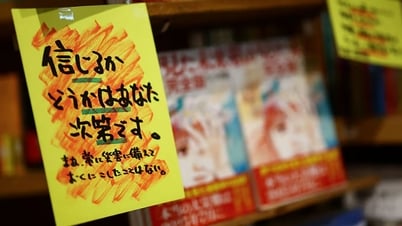















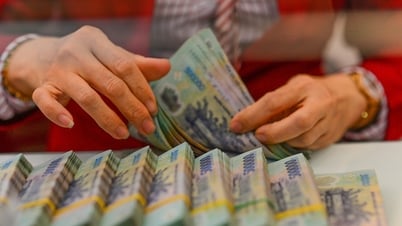





































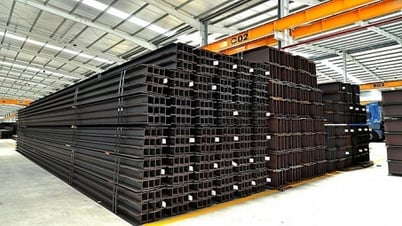
















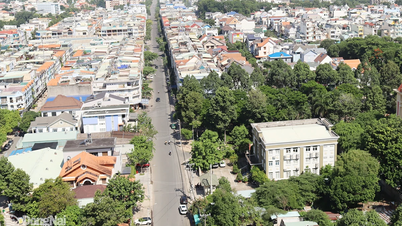













Comment (0)